1
The National Aerospace Initiative
INTRODUCTION
In 2001, the Director of Defense Research and Engineering (DDR&E) started a joint Department of Defense (DoD)–National Aeronautics and Space Administration (NASA) technology initiative called the National Aerospace Initiative (NAI). The stated mission of NAI was to “ensure America’s aerospace leadership with an integrated, capability-focused, national approach that enables high speed/hypersonics flight; affordable, responsive, safe, reliable access to and from space; and in-space operation by developing, maturing, demonstrating, and transitioning transformational aerospace technologies” (Richman, 2003a).
NASA describes NAI as a “twenty-five year national technology plan to mature key technologies for NASA and Department of Defense needs” (Rogacki, 2003). Common technologies that both agencies need to accomplish their respective mission objectives include long-life rocket engines; combined-cycle propulsion; ram/scramjets; long-life, lightweight airframes and tanks; durable thermal protection systems; all-electric subsystems; and rapid-turnaround ground and flight operations (Rogacki, 2003). NAI is an effort by DoD and NASA to partner and cooperate to develop these technologies that both agencies need.
According to DDR&E, NAI is a technology initiative, not a DoD or NASA system development or acquisition program (Richman, 2003a). By DDR&E and NASA definition, the three aerospace areas, or “pillars,” encompassed by NAI are hypersonics, access to space, and space technologies. A widely used illustration of the NAI technology framework is shown in Figure 1-1. Each area includes a collection of science and technology (S&T) projects, many or most of which were already planned or ongoing before NAI was started.1 The three areas have some overlaps; however, they can also stand largely by themselves.
|
1 |
A few of these are the following (more NAI projects are described in Chapters 2 and 3 and Appendixes C and D): • Army Hypersonic Missile Technology, • Navy Hypersonics Flight Demonstrator Program (HyFly), • Air Force Single-Engine Demonstrator, • The Defense Advanced Research Projects Agency (DARPA) Responsive Access, Small Cargo, Affordable Launch (RASCAL), and • NASA Next-Generation Launch Technology (NGLT). |
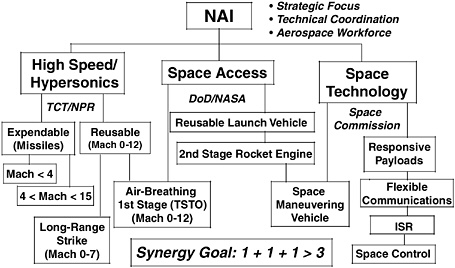
FIGURE 1-1 National Aerospace Initiative technology framework. ISR, intelligence, surveillance, and reconnaissance. SOURCE: Sega, 2003.
Examples of technologies and systems in each of the three pillars are shown in the figure. Implicit in the partnership between DoD and NASA is the goal of increasing the synergy and efficiency of the agencies’ combined programs in the three NAI areas.
GOALS, PLANNING APPROACH, AND FUNDING
The high-level, national goals of the NAI include renewing American aerospace leadership in the 21st century, pushing the space frontier further and faster with breakthrough aerospace technologies, revitalizing our critical aerospace industry, stimulating science and engineering in our classrooms, and enhancing our security, economy, and quality of life (DDR&E, 2003).
NAI goals for each pillar are stated as follows (DDR&E, 2003):
-
Hypersonics. Flight demonstrate increasing Mach number each year, reaching Mach 12 by 2012.
-
Space access. Demonstrate technologies to dramatically increase space access and reliability while decreasing costs.
-
Space technology. Leverage the full potential of space.
An NAI executive office with a director, leads drawn from both NASA and the DoD for the three pillars, and a small support staff have been established (Figure 1-2). The executive office acts as an advocate, facilitates collaboration, and develops goals, plans, and roadmaps in all three technology areas. The concept shown in Figure 1-2 is a work in progress; it has not yet been formally approved.
To go from the high-level goal statements for the initiative as a whole to project-level technology roadmaps, planning teams that included participants from the three military departments, NASA, and DDR&E staff were formed around the three NAI pillars (Richman, 2003a). The NAI
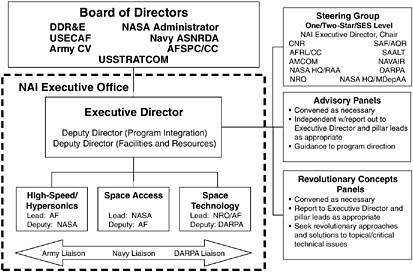
FIGURE 1-2 NAI executive office (draft). SOURCE: Sega, 2003.
planning teams that met during 2002 used a process they called GOTChA (goals, objectives, technical challenges, and approaches). The GOTChA process combines layered analysis (goals are analyzed to determine objectives, which are analyzed to determine technical challenges, and so on) and planning (projects are identified and roadmaps developed to address the challenges). Figure 1-3 illustrates the approach used by the planning teams. The GOTChA charts mentioned in Figure 1-3
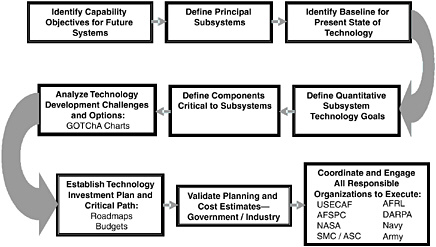
FIGURE 1-3 Technical analysis and planning approach used by NAI planning teams. SOURCE: Liston et al., 2003.
TABLE 1-1 Air Force NAI-Specific and Related Funding (thousand dollars)
|
Pillar |
FY04 NAI Plus-Up Only |
FY04a |
FY05 |
FY06 |
FY07 |
FY08 |
FY09 |
|
Hypersonics |
111,292 |
126,941 |
028,729 |
052,011 |
061,653 |
064,260 |
051,100 |
|
Space access |
025,708 |
114,035 |
098,990 |
108,659 |
118,571 |
118,562 |
110,261 |
|
Space technology |
024,500 |
137,415 |
115,266 |
114,714 |
122,961 |
164,595 |
165,103 |
|
Total |
161,500 |
378,391 |
242,985 |
275,384 |
303,185 |
347,417 |
326,464 |
|
a FY 2004 amounts include plus-up. SOURCE: Blackhurst, 2003. |
|||||||
show the flow downward from goals, through objectives, technical challenges, and approaches, to specific projects.2 During that time, the military departments and DDR&E worked on their science and technology (S&T) program budget requests to be submitted to Congress during the winter of 2003 as part of the President’s budget request (PBR) for fiscal year (FY) 2004.
Programs to be included in the NAI are technology development and demonstration activities, both new and ongoing before the initiative was set up. Responsibility for the funding and direction of these activities remains within the individual military departments and the two lead agencies, and they retain the right to establish budgets and redirect funds. The NAI, however, may use the appropriation process to obtain additional funds earmarked for specific technologies or demonstrations.
Late in the budget cycle, DDR&E succeeded in having new NAI funding (in addition to that allocated for projects already under way or planned) included in the President’s budget request (PBR) for FY 2004. The PBR contained new NAI funding for FY 2004, not for FY 2005 or beyond (Richman, 2003b). Table 1-1 shows the plus-up Air Force NAI funding contained in the FY 2004 PBR.
The committee was unable to obtain data similar to those in Table 1-1 for the other NAI participants (other military departments, defense agencies, NASA, or NAI as a whole) and so could not obtain a clear, comprehensive picture of NAI funding. Although bits and pieces of funding data appeared in some of the presentations, the committee could not clearly determine what is being spent or is planned to be spent on NAI. Thus, it lacked the information it needed to assess NAI’s financial feasibility.
RELEVANCE TO OPERATIONAL CAPABILITY REQUIREMENTS
The committee believes that any assessment of the operational relevance of the technologies and capabilities resulting from NAI must be based on their ability to contribute to the accomplishment of the operational needs of NASA and the military services. Those needs are best articulated by the organizations themselves and are contained in the military services’ operational requirements documents (ORDs) and mission needs statements (MNS), and in NASA’s program requirements documents (PRDs).
However, it is important to note that rarely is a research program established solely to solve some specific goal or objective. Instead, research programs typically lay the groundwork for and/or
assist in the development of technologies that promise to improve operational capabilities, including warfighting, access to space, or some other general goal or objective. As the Air Force pointed out, “. . . for transformational technologies there has never been a formal requirement for that technology” (AFRL, 2003a). When the Wright brothers developed the airplane and forever transformed human life, it was not in response to a requirement for such a vehicle. Much the same can be said for the evolution of the airplane into a combat-capable system and the development of precision guided munitions, stealth technology, and the Global Positioning System (GPS). Common to all of these transformational technologies was not a formal requirement but, rather, indicators that they could have a strong potential payoff. Based on information supplied by the services and NASA to the committee, this appears to be the case for the technologies and capabilities contained in the NAI.
To ensure that it properly understood assigned missions and the operational needs they drive, the committee contacted NASA, the Air Force Space Command, the U.S. Strategic Command, and the Air Combat Command, as well as representatives of the U.S. Navy and the U.S. Army. Each organization was asked to prepare a talking paper on NAI’s operational relevance to its goals and missions. In addition, the Air Force Research Laboratory (AFRL) was asked to justify its NAI-related research. AFRL explained that its thrusts, priorities, and funding requirements are developed in response to current and future operational needs of the Air Force. The committee was particularly interested in what stated operational needs or requirements had driven the ongoing research and how those needs had contributed to the establishment of research goals and priorities for NAI.
The documents received from the U.S. military organizations and NASA as a result of these inquiries are summarized below.
Summary of Stakeholder Views
U.S. Air Force
The U.S. Air Force Posture Statement 2003 and America’s Air Force Vision (AFRL, 2003b) describe the Air Force vision of Global Vigilance, Global Reach, and Global Power and the concepts of operations (CONOPS) under which the Air Force will operate. The objective is fourfold:
-
To transform the Air Force into a capabilities-focused expeditionary air and space force.
-
To make warfighting effects the drivers for everything the Air Force does.
-
To provide necessary resources expeditiously to warfighters.
-
To guide planning, programming, and requirements reform.
The six CONOPS developed in support of these objectives include Global Strike, Homeland Security, Global Mobility, Global Response, Nuclear Response, and Space and C4ISR (see Figure 1-4).
To understand how the technologies and capabilities contained in NAI support these CONOPS, it is valuable to look at how they are defined in the posture statement (AFRL, 2003a).
-
Global Strike Task Force (GSTF). Employs joint power-projection capabilities to engage anti-access and high-value targets, gain access to denied battlespace, and maintain battlespace access for all required joint/coalition follow-on operations.
-
Global Response Task Force (GRTF). Combines intelligence and strike systems to attack fleeting or emergent, high-value or high-risk targets by surgically applying air and space power in a narrow window of opportunity, anywhere on the globe, within hours.
-
Space and C4ISR Task Force. Harnesses horizontal integration of manned, unmanned and
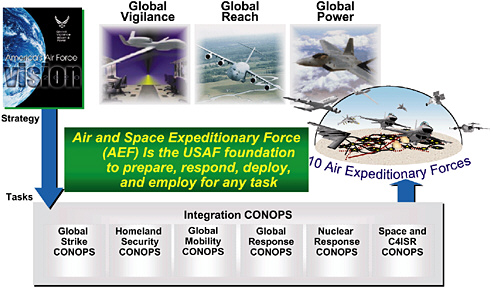
FIGURE 1-4 Air Force CONOPS construct. SOURCE: AFRL, 2003a.
-
space systems to provide persistent situational awareness and executable decision-quality information to the Joint Forces Commander.
Looking at the breadth of these concepts, it is easy to see how hypersonics and improved access to space can contribute to their accomplishment. These concepts also drive the programs and priorities at AFRL. A significant portion of AFRL’s turbine engine technology base, for example, is focused on high-speed applications that respond directly to Air Force CONOPS-derived capability needs. Similarly, technologies derived from AFRL’s Long Range Strike planning activity, with their explicit linkage to the Global Strike and Global Response CONOPS, support the development of a Mach 4+ weapon and a sustained supersonics-capable air platform, both of which are responsive to NAI’s high speed/hypersonics pillar. In addition, the proposed turbine-based combined-cycle engine effort extends the technology to enable a Mach 0-4+ accelerator that addresses Air Force requirements for a responsive space launch capability, which in turn directly supports the NAI access-to-space pillar.
The AFRL rocket propulsion directorate also supports NAI and recognizes the access-to-space pillar, under which its research is being performed, as the central pillar of the program. In addition to providing rocket propulsion technology, the access-to-space pillar will provide “airframe, avionics, thermal protection system technology, operations, payload technologies and systems engineering tools” (AFRL, 2003c). It believes the technologies being pursued will be applicable and required for a myriad of vehicle configurations, including air-breathing engine/rocket or all-rocket systems, expendable or reusable, horizontal or vertical takeoff and 1.5, 2, or more stage vehicles covering the entire range of payload classes. In addition, AFRL points out that some of the technology will be applicable to payloads like the space maneuvering vehicle (SMV), the modular insertion stage (MIS), and the common aero vehicle (CAV). The bottom line is that AFRL feels strongly
that work in all of these areas is important and necessary to provide an affordable, transformational access-to-space capability (AFRL, 2003c).
Operational Commands
The operational commands, including the U.S. Strategic Command, the Air Force Space Command, and the Air Combat Command, all believe that NAI may have relevance to their required operational capabilities. They believe that while the technologies and capabilities of NAI support the accomplishment of their goals and missions, other alternatives or factors should be considered. In addition, the operational commands believe that requirements to develop NAI technologies should compete with all other requirements for available resources.
U.S. Strategic Command. The U.S. Strategic Command (USSTRATCOM) believes that NAI could contribute to key components of the command’s global mission of Global Strike, Global Integrated Missile Defense, Underground Facility Defeat, Mobile Missile Defeat, Global Nuclear Deterrence, Global C4ISR, and Space Operations (Shelton, 2003). USSTRATCOM believes there is potential for each of the highlighted portions of the NAI technology framework shown in Figure 1-5 to support the command’s ability to accomplish its missions (Shelton, 2003).
Specifically, USSTRATCOM believes hypersonics technology could be a key enabler for its Global Strike mission because of the technology’s ability to facilitate long-range rapid strike, prompt target kill, future cruise missile applications, and CAV applications. It also believes hypersonics technology could act as a deterrent and hold rogue states at risk, allow for timely penetration of enemy air defenses, and allow USSTRATCOM to launch outside the enemy’s interceptor range. In addition, USSTRATCOM values the potential contribution of hypersonics technologies to its Global Integrated Missile Defense mission, because high speeds could enable the interception of incoming depressed trajectory theater ballistic missiles and cruise missiles (Shelton, 2003).
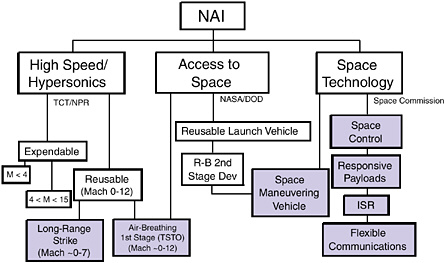
FIGURE 1-5 NAI program framework that supports USSTRATCOM missions. SOURCE: Shelton, 2003.
For the potential contributions of the NAI high speed/hypersonics pillar to be realized, however, USSTRATCOM believes that several “major technical challenges must be overcome, including the successful demonstration of hydrocarbon- and hydrogen-powered scramjet and combined-cycle propulsion concepts; the synergistic integration and control of propulsion and airframe designs; the application of material systems capable of sustaining the temperatures encountered at hypersonic speeds; and vehicle thermal management systems utilizing fuel as the principal coolant” (Winchell, 2003, p. 1).
The NAI access-to-space pillar is also of interest to USSTRATCOM because the command requires routine, on-demand access to space. USSTRATCOM believes that if the technology matures, hypersonic, air-breathing, two-stage-to-orbit capability could provide aircraftlike operations, responsive launch, and flexible launch/recovery, all at lower cost and with minimal facilities and crews. The major technical challenges that USSTRATCOM believes NAI must overcome to facilitate these contributions include “high strength, lightweight structures; advanced thermal protection systems; rocket and air-breathing propulsion; and vehicle health monitoring systems” (Winchell, 2003, p. 1).
The bottom line is that “USSTRATCOM sees potential for NAI’s technological focus to support several USSTRATCOM missions. However, industry must overcome several significant technological challenges to operationalize these capabilities” (Winchell, 2003, p. 2).
Air Force Space Command. The Air Force Space Command (AFSPC) believes that NAI is relevant to the operational requirements laid out in two of its MNSs: MNS AFSPC 001-01, Operationally Responsive Spacelift (AFSPC, 2001), and MNS AFSPC 002-01, Prompt Global Strike (AFSPC, 2003). The Operationally Responsive Spacelift (ORS) MNS, approved by the Air Force Requirements Oversight Council (AFROC) in November 2001 and validated by the Joint Requirements Oversight Council (JROC) in April 2002, states that “ORS is the key enabler for conducting the full spectrum of military operations in space and for achieving space superiority” (AFSPC, 2001, p. 2). It has two subtasks:
-
Transporting mission assets, including delivering payloads and changing orbits
-
Supports emerging missions: space control, missile defense, and force application and
-
Must be flexible, inexpensive, and available on demand.
-
-
Spacecraft servicing, including traditional satellite operations such as resupply, repair, replacement, and upgrade of space assets while in orbit.
The required capabilities laid out in this MNS include the following (AFSPC, 2001, p. 2):
-
On-demand satellite deployment to augment and replenish constellations,
-
Launch to sustain required constellations for peacetime operations,
-
Recoverable, rapid-response transport to, through, and from space, and
-
Integrated space operations mission planning for on-demand execution of space operations.
The Prompt Global Strike (PGS) MNS, validated by the JROC in March 2003, has the following mission objective: “Strike globally and rapidly with joint forces against high-payoff targets in a single or multi-theater environment” (AFSPC, 2003, p. 1). According to the MNS,
Prompt global strike (PGS) capability will give combatant commanders the capability to rapidly deny, delay, deceive, disrupt, destroy, exploit, or neutralize targets in a timeframe that is reduced from weeks and days to hours and minutes, even when U.S. and Allied forces have no permanent military presence or only limited infrastructure in a region and regardless of anti-access threats.
Prompt Global Strike mission needs include:
-
improved responsiveness and maneuver to hold targets at risk on timelines consistent with the commander’s intent and national security objectives;
-
improved employment flexibility against preplanned and emergent targets and rapid retargeting and execution through integration of real-time intelligence updates;
-
improved reliability and accuracy to deliver appropriate strike options to meet planned mission effectiveness criteria required by combatant commanders while minimizing collateral damage;
-
linkage to highly accurate, complete, timely, and usable intelligence, surveillance, and reconnaissance support;
-
survivability, to operate effectively in the defense environment and the meteorological, oceano-graphic, and space weather conditions that are encountered during the system’s operational life;
-
affordability, achieved by designing a system with due consideration for the life cycle costs of meeting mission requirements;
-
robustness necessary to satisfy competing global mission requirements in a multi-theater environment. (AFSPC, 2003, p. 1)
To the extent that the technologies and capabilities emanating from NAI would support these needs, they would assist the AFSPC in accomplishing DoD-validated mission needs for ORS and PGS. Note, however, that no specific requirements for hypersonics or other NAI technologies are found in the MNS documents. Many or all of the NAI technologies might fulfill the mission needs outlined in the MNS, but the command is still looking at alternatives and has yet to determine the best ways of meeting those needs.
Air Combat Command. According to Robert Tom, for the Air Combat Command (ACC), the operational relevance of NAI is much more closely tied to the high speed/hypersonics pillar. ACC believes that high speed/hypersonics is a revolutionary capability that supports numerous CONOPS, including Global Strike, Global Persistent Attack, and, potentially, Homeland Security (Tom, 2003).
ACC, however, is focused on satisfying its near-term requirements, which do not include hypersonics. This does not diminish the command’s interest in the continued development of the technology or its potential application to future long-range strike (FLRS) capabilities. ACC points out that while speed enhances survivability, it is not a stand-alone attribute: Range, payload, persistence, and survivability are also important and must be evaluated when developing a FLRS system. Potential benefits of hypersonics that interest the ACC include these (Tom, 2003, p. 1):
-
Rapid response from the continental United States (CONUS) or forward operating locations;
-
Increased survivability, associated with speed and altitude, against “today’s” threats;
-
Reduced sortie and turn time, which “may” lead to reduced fleet size;
-
Ability to neutralize time-critical targets (TMTs); and
-
Expanded weapons capability to include hard and deeply buried targets and weapons of mass destruction (WMD).
Air Combat Command knows that hypersonics technology is still immature and that technology is the limiting factor in fielding a hypersonics system. Other ACC concerns are the huge developmental costs and the number and type of facilities required to support the research, development, and testing of hypersonics systems. ACC believes that while the development of hypersonics technology is critical to future combat capability, it must take its place among other S&T efforts and priorities to ensure the proper balance between current, near-term, and future combat capability. Specifically, ACC feels that near-term efforts should include, but not be limited to, the following (Tom, 2003):
-
Continued funding from laboratories and industry funding of hypersonic research at some level that will allow appropriate levels of research on other critical technologies,
-
Continued efforts to identify critical enabling technologies that decrease hypersonics costs,
-
Support for the development of a hypersonic cruise missile, as identified by the Air Armament Summit roadmap,
-
Continuation of the FY 2010-2019 Hypersonic Concept Technology Development, and
-
Transition to system development and demonstration by about 2020.
In summary, ACC’s position is very similar to that of the other operating commands. It is interested in the technology but realizes the technical challenges ahead and the resources required. Although ACC knows that hypersonics technology is still immature, its weapons roadmap outlines a hypersonic cruise missile timeline (Tom, 2003). It believes that fielding a hypersonic weapon before a platform is the most feasible, realistic solution to its requirements. Therefore, although ACC believes that hypersonics S&T is critical for future combat capability, it also believes that the resources required to accomplish that S&T must be balanced with resources required to support other S&T efforts and priorities (Tom, 2003). Air Combat Command believes that to make an informed decision, it must evaluate all required capabilities/attributes (range, payload, speed, survivability and persistence), that trade-offs are likely, and that all solutions must compete with other ACC programs (Tom, 2003).
National Aeronautics and Space Administration
NASA’s capability requirements are formally stated in PRDs that generally follow the form of standard military requirements documents. NASA’s PRD NP01, Next Generation Launch Technology Program, dated August 14, 2003, lays out NASA requirements relative to NAI (NASA, 2003). All technology development and risk reduction activities previously chartered under the Second Generation Reusable Launch Vehicle Program and the Advanced Space Transportation Program were combined to form the NGLT Program. PRD NP01 defines the program-controlled requirements for the technology and systems engineering and integration projects and offices as a whole, as well as the requirements for each individual project and office under the NGLT Program:
The objectives of NASA’s NGLT Program are to identify systems to meet the national space access mission requirements and to develop technology required for national space access mission requirements. The NGLT Program is designed to advance the state-of-the-art in space transportation systems (STSs) technologies for low-cost, reliable, and safe transportation from earth to orbit; provide support to national defense needs; and support educational and public awareness efforts of the Agency. (NASA, 2003)
Specific objectives of the NGLT Program are as follows (NASA, 2003):
-
Make future STSs safer and more affordable, operationally responsive, and reliable.
-
Develop innovative approaches and concepts to support future decisions on systems, infra-structures, and missions for human and robotic exploration of space.
-
Enhance the nation’s security by developing and demonstrating critical access-to-space technologies that benefit NASA, DoD, and other government agencies.
-
Improve student proficiency in space, technology, engineering, and mathematics by creating a culture of achievement using educational programs, products, and services based on NASA’s unique missions, discoveries, and innovations.
-
Increase public awareness and appreciation of the benefits made possible by NASA research and innovation in aerospace technology.
To achieve the objectives listed above, the NGLT program has been divided into three parts: Propulsion Technology, Launch Systems Technology, and Systems Engineering and Integration. When the objectives of NASA’s NGLT Program are compared with the objectives of the National Aerospace Initiative, the commonality of interests and goals is clear.
NAI and the Interrelationship of NASA and DoD Technology Requirements
Table 1-2 shows the relationship between NASA NGLT and DoD technologies and their relevance to the NAI pillars, reusable launch vehicles (RLVs), and expendable launch vehicles (ELVs).
The overlap of various elements in the NAI access-to-space and hypersonics pillars with other major programs at DoD and NASA is evident at a glance. Although it may be difficult to find a specific requirement for each element of NAI within DoD or NASA operational requirements documents, their relevance to assigned missions and/or ongoing research programs is obvious.
Current Thrusts in NAI and Summary of End User Requirements
Currently there are three broad mission thrusts within the NAI’s high speed/hypersonics and access-to-space pillars as the committee interpreted them from the stakeholders’ formal statements and their supporting oral comments during presentation (Figure 1-6). Although the underlying high speed S&T base exhibits a great deal of commonality and cross-applicability among participants and their widely varying mission sets, the requirements for end application and system performance do, in fact, vary greatly, particularly between the DoD and NASA.
Hypersonics
As Figure 1-6 shows, DoD’s NAI missions focus on ultra-high-speed, standoff strike and interceptor weapons against time-urgent targets, as well as on CONUS-based, global-reach, prompt, conventional strike weapons. DoD is also interested in hypersonic reconnaissance and hypersonic transport of weapons for application in-theater, but only on a wait-and-see basis. NASA missions in which global-reach hypersonic transport could play a role are driven by requirements for scheduled service economies and reliability. Importantly, not all the missions shown in Figure 1-6 receive equal attention from their primary stakeholders, nor are all parts of each service or agency equally convinced of the competitiveness of the system options being supported by the underlying technologies. For instance, neither DoD nor NASA seems much interested in ultra-high-speed (hypersonic) aircraft for the transport of either weapons or personnel over global distances. The biggest split on system concept for the same missions is between supporters of rocket approaches, which at this time are much more mature and evolutionary, and supporters of air-breathing hypersonic approaches, which need a great deal of risk-reduction before judgments can be made about them.
Space Access
DoD emphasis on space access is timely launch-on-demand and flexible basing, payload accommodation, and orbital insertion, whereas NASA emphasizes affordable recurring costs
TABLE 1-2 Relationship Between NGLT and DoD Technologies and Their Relevance to NAI Pillars, Reusable Launch Vehicles, and Expendable Launch Vehicles
|
Agency |
Element |
Common to Reusables |
Hypersonics Air-Breathing Focused |
|
NASA Augment |
Air liquefaction demo |
|
|
|
|
Hot structures |
X |
|
|
|
Integrated structural demo |
X |
|
|
|
RP engine prototype |
X |
|
|
|
2nd stage H2 engine technology |
X |
|
|
|
Hypersonics demo follow-on |
|
X |
|
|
High-payoff propulsion research |
X |
|
|
|
Integrated avionics/IVHM testbed |
X |
|
|
|
Power and actuation testbed |
X |
|
|
NASA Inguide |
Systems engineering and analysis |
X |
|
|
|
Vehicle systems |
X |
|
|
|
Integrated powerhead demo |
X |
|
|
|
Nontoxic OMS/RCS demo |
X |
|
|
|
Propulsion research and tech |
X |
X |
|
|
Propulsion tech and integration |
X |
|
|
|
X-43C vehicle (flight demo) |
|
X |
|
|
Turboramjet Mach 4 testbed demo |
|
|
|
|
RBCC testbed demo |
|
X |
|
|
SSC facility |
X |
|
|
|
RP engine prototype demo |
X |
|
|
DoD |
IVHM |
X |
|
|
|
Streamlined operations architecture |
X |
|
|
|
Reusable metallic cryo tank |
X |
|
|
|
Durable TPS |
X |
|
|
|
2nd stage propulsion technology |
X |
|
|
|
Upper-stage engine |
|
|
|
|
X-43C engine (flight demo) |
|
X |
|
|
Hypersonics demo follow-on |
|
X |
|
|
Scramjet demos |
|
X |
|
|
Ops demonstrator |
X |
|
|
|
ORS CAV |
|
|
|
NOTE: HTHL, horizontal takeoff/horizontal landing; OSP, orbital space plane; EELV, evolved, expendable launch vehicle; ATS, automatic test system; RP, rocket propellant; IVHM, integrated vehicle health management; RBCC, rocket-based combined cycle; SSC, Stennis Space |
|||
(including logistics) and launch reliability (for crew safety and long life for reusable boost stages). NASA is willing to accept longer reaction and turnaround times than DoD.
FINDINGS AND RECOMMENDATIONS
Finding 1-1. The NAI has been very effective in fostering collaboration, communications, and advocacy of technical efforts in air-breathing hypersonics and rocket-based access to space across the services and NASA. The benefits of having the NAI are recognized by the participating organizations.
|
HTHL Focused |
DoD Rqts Driven |
Applicable to OSP |
Applicable to Heavy Lift |
Applicable to EELV |
NAI ATS |
NAI Hypersonics |
|
X |
|
|
X |
|
X |
|
|
|
|
X |
X |
|
X |
|
|
|
|
X |
X |
|
X |
|
|
|
|
|
|
|
X |
|
|
|
|
X |
X |
X |
X |
|
|
|
|
|
|
|
|
X |
|
|
|
|
X |
|
X |
|
|
|
|
X |
X |
X |
X |
|
|
|
|
X |
X |
X |
X |
|
|
|
|
|
X |
X |
X |
|
|
|
|
X |
X |
X |
X |
|
|
|
|
|
X |
|
X |
|
|
|
|
X |
X |
|
X |
|
|
|
|
|
X |
|
X |
|
|
|
|
|
X |
X |
X |
|
|
|
|
|
|
|
|
X |
|
X |
|
|
X |
|
|
X |
|
|
|
|
|
|
|
X |
|
|
|
|
X |
X |
X |
|
|
|
|
X |
X |
X |
X |
|
|
|
X |
X |
X |
X |
X |
|
|
|
X |
X |
X |
X |
X |
|
|
|
|
|
X |
|
X |
|
|
|
X |
X |
X |
|
X |
|
|
|
X |
X |
X |
X |
X |
|
|
|
X |
|
X |
X |
X |
|
|
|
|
|
|
|
|
X |
|
|
|
|
|
|
|
X |
|
|
|
|
|
|
|
X |
|
|
X |
|
X |
X |
X |
|
|
|
X |
|
|
|
X |
|
|
Center; TPS, thermal protection system; ORS, Operationally Responsive Spacelift; CAV, common aero vehicle. SOURCE: Lyles, 2003. |
||||||
Recommendation 1-1. DoD and NASA, employing NAI, should continue to advocate, communicate, and facilitate the nation’s endeavors in hypersonics and access to space and encourage a global view beyond the institutional constraints imposed on individual partners.
Finding 1-2. Incomplete data limit the ability to obtain a clear, comprehensive picture of NAI funding, both by those who would assess the initiative’s financial feasibility in a specified time frame and by NAI’s participants. The lack of comprehensive funding data complicates effective, coordinated use of resources across the NAI’s many programs and activities.
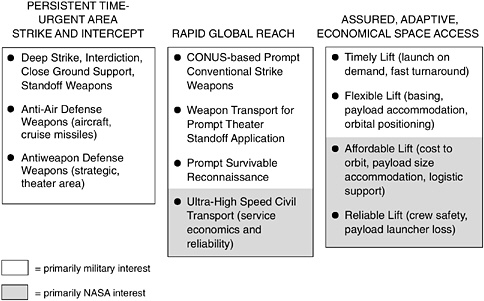
FIGURE 1-6 NAI missions for NAI hypersonics and space access.
Recommendation 1-2. The NAI executive office should develop and communicate clear, comprehensive NAI funding data that show all the ongoing, planned, and newly proposed NAI projects of DoD and NASA depicted on NAI roadmaps and tied directly to objectives. In their budget plans and submissions, DoD and NASA should show all NAI projects and budget lines as part of a unified NAI effort.
Finding 1-3. The military services and NASA are generally supportive of the technologies and capabilities envisioned by NAI. They see those technologies and capabilities, if they mature, as being relevant to the capability requirements they have developed in support of their assigned mission requirements. They believe these initiatives need to be supported and funded in proportion to their potential contribution to the current and future operational requirements of each organization. The variance in those requirements, resource limitations, unknowns surrounding R&D results and timing, and different assessments of the applicability of the resulting technologies are all part of the stakeholders’ current uncertainty with respect to NAI.
Finding 1-4. The services and NASA believe NAI’s efforts to sustain our nation’s aerospace leadership through technology development and demonstration are of great value in terms of focusing research, advocating funding, facilitating coordination, and keeping the lines of communication open to ensure that informed decisions are made. However, the services expressed concern about any NAI authority to direct or coordinate the research itself, because NAI is not in a position to evaluate internal competing service and NASA requirements. NAI can play a strong advocacy role by fostering research that will ensure our country’s continued aerospace leadership and facilitating the efficient accomplishment of that research.
REFERENCES
Published
AFSPC (Air Force Space Command). 2001. FINAL Mission Needs Statement AFSPC 001-01, Operationally Responsive Spacelift, ACAT Level I. Colorado Springs, Colo.: AFSPC.
AFSPC. 2003. FINAL Mission Need Statement AFSPC 002-01, Prompt Global Strike, ACAT I. Colorado Springs, Colo.: AFSPC.
DDR&E (Director of Defense Research and Engineering). 2003. National Aerospace Initiative, Sustaining American Aerospace Initiative. Available at http://www.dod.mil/ddre/nai/nai_brochure1.pdf. Accessed on December 23, 2003.
NASA (National Aeronautics and Space Administration). 2003. Program Requirements Document for the Next Generation Launch Technology Program . NP01, Version Revision A. NGLT-PROG-0001A.
Unpublished
AFRL (Air Force Research Laboratory). 2003a. Response to committee questions at Dayton meeting. Sent by Jack Vondrell to Lt. Gen. Kenneth Eickmann, committee member. September 23.
AFRL. 2003b. Operational Relevance of NAI Responsive Turbine Engine Technologies. Prepared by Tim Lewis and sent by Jack Vondrell to Lt. Gen. Kenneth Eickmann, committee member. September 23.
AFRL. 2003c. NAI Rocket Propulsion Point Paper for Air Force Science and Technology Board. Sent by Jack Vondrell to Lt. Gen. Kenneth Eickmann, committee member. September 18.
Blackhurst, J. 2003. AFRL and NAI Perspectives to AFSTB Committee on NAI. Briefing by Col. Blackhurst, Chief, Space and Missile Systems Sector, AFRL, to the Committee on the National Aerospace Initiative. September 3.
Liston, G.W., C.R. McClinton, M.L. Mumford. 2003. High Speed/Hypersonics Pillar Technology Development Approach. Presentation by Glenn Liston, NAI Executive Office, to the Committee on the National Aerospace Initiative. October 23.
Lyles, G. 2003. FY 04-09 Application Matrix. Prepared by Garry Lyles, NGLT Program Manager, NASA, in response to questions by the committee. Submitted on October 8.
Richman, M. 2003a. National Aerospace Initiative: Sustaining American Aerospace Leadership. Briefing by Mike Richman, Special Assistant to the DDR&E, to the Air Force Science and Technology Board. March 24.
Richman, M. 2003b. National Aerospace Initiative. Briefing by Mike Richman, Special Assistant to the DDR&E, to the Committee on the National Aerospace Initiative. October 7.
Rogacki, J. 2003. The National Aerospace Initiative—A Synergistic Partnership Between NASA and DoD. Briefing by John “Row” Rogacki, Deputy Associate Administrator for Space Transportation, Office of Aerospace Technology, NASA, to the Committee on the National Aerospace Initiative . August 5.
Sega, R. 2003. National Aerospace Initiative—NRC Briefing. Briefing by Ron Sega, DDR&E, Office of the Secretary of Defense, to the Committee on the National Aerospace Initiative. August 6.
Shelton, W.L. 2003. National Aerospace Initiative (NAI) USSTRATCOM Perspective. Briefing by Brig. Gen. Shelton, Director, Policy Resources and Requirements, USSTRATCOM, to the Committee on the National Aerospace Initiative. September 3.
Tom, R.C. 2003. ACC Bullet Background Paper on Speed Versus Other Future Long Range Strike (FLRS) Attributes Needed by the Warfighter. Prepared by Robert C. Tom, ACC/DRMA(ANSER)/4-5832/ret/6 Oct 03, and given to Lt. Gen. Kenneth Eickmann, committee member. October 6.
Winchell, G. 2003. National Aerospace Initiative (NAI) Information Paper. Paper prepared by Maj. Winchell, USAF, for Lt. Gen. Kenneth Eickmann, committee member. October 7.















